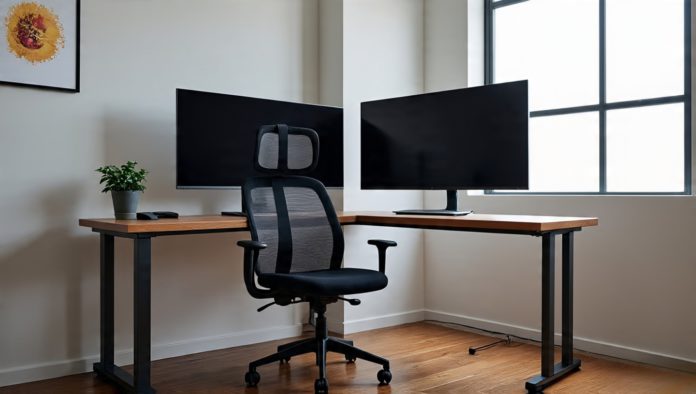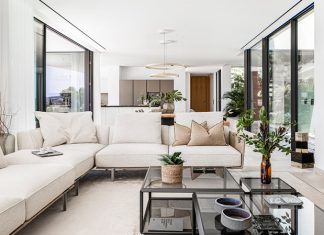Creating the right workstation setup has become more important than ever. With hybrid work arrangements, the growing demand for home offices, and businesses prioritising employee wellbeing, the modern workstation is no longer just a desk and a chair. It’s a thoughtfully designed environment that enhances productivity, comfort, and overall performance. Whether you’re setting up a home office or redesigning a corporate workspace, investing in the right components can make all the difference.
Businesses today often turn to solutions like Adaptive Furniture’s workstations, which combine function, flexibility, and style, to ensure employees have the best possible environment to work in. From ergonomics to technology integration, a well-structured workstation should strike a balance between professional needs and personal comfort.
In this article, we’ll explore the essential components of a modern workstation setup and why each plays a crucial role in creating a workspace that works for you.
The Importance of Ergonomics
A workstation must prioritise ergonomics to reduce strain and support long-term health. Poorly designed setups often lead to back pain, neck strain, and repetitive stress injuries, which can affect both productivity and wellbeing.
Key ergonomic components include:
- Adjustable desk height: Sit-stand desks are increasingly popular, allowing users to alternate between sitting and standing throughout the day. This helps combat sedentary behaviour and supports better posture.
- Ergonomic chair: A chair with lumbar support, adjustable height, and flexible armrests ensures proper alignment of the spine and reduces discomfort during long working hours.
- Monitor positioning: Screens should be positioned at eye level and at arm’s length to prevent neck strain and eye fatigue.
When ergonomics are built into the workstation from the start, employees can focus better, work longer without discomfort, and maintain healthier work habits.
Desk Design and Workspace Layout
The desk is the centrepiece of any workstation – its size, shape, and design will dictate how efficiently you can work. Features to consider include:
- Surface space: Ample desk surface allows room for multiple monitors, notebooks, and personal items without feeling cluttered.
- Cable management: Modern desks often include built-in cable trays or channels to keep cords organised and out of sight.
- Modular design: Many modern workstations use modular layouts, making it easier to adapt the space for different tasks or team collaboration.
The workstation layout should reflect the nature of the work being done. For example, creative professionals may require larger surfaces for sketching or multiple screens, while administrative roles may benefit from compact designs that maximise efficiency in smaller spaces.
Technology Integration
A workstation is only as effective as the technology that supports it. With more tasks relying on digital tools, seamless integration of technology has become a key part of modern setups.
Essential technology considerations include:
- Monitors and display setups: Dual or ultrawide monitors improve multitasking and reduce the need to switch between tabs.
- Docking stations and connectivity: A single hub for charging, USB ports, and external connections streamlines the setup and reduces cable clutter.
- Wireless accessories: Keyboards, mice, and headphones that operate wirelessly free up space and make the workstation more flexible.
- Power access: Built-in charging points and easily accessible outlets prevent disruption and keep devices running efficiently.
Smart integration of technology not only boosts efficiency but also creates a cleaner, more professional-looking space.
Lighting for Productivity and Comfort
Lighting has a profound impact on focus and wellbeing; poor lighting can cause eye strain, fatigue, and even affect mood. A well-lit workstation setup ensures clarity and comfort. Best practices for workstation lighting include:
- Natural light: Position desks near windows wherever possible to benefit from daylight, which improves alertness and mental health.
- Task lighting: Adjustable desk lamps provide direct lighting for reading, writing, or detailed work.
- Ambient lighting: Evenly distributed lighting throughout the room reduces glare on screens and helps prevent headaches.
Balancing natural and artificial light ensures the workstation remains functional at all times of the day.
Organisation and Storage Solutions
Clutter is one of the biggest obstacles to productivity – a workstation with built-in organisation helps maintain focus and efficiency. Practical solutions include:
- Drawer units: Keep frequently used items within easy reach.
- Shelving and overhead storage: Maximise vertical space without crowding the desktop.
- Cable organisers and trays: Prevent tangled cords and maintain a tidy appearance.
- Desk dividers or privacy screens: Useful in open-plan offices to reduce distractions and create a personal zone.
An organised workstation supports a clear mind and prevents time wasted searching for misplaced items.
Personalisation and Aesthetics
Workstations should not only be functional but also reflect a sense of identity and comfort. Personal touches can make a workspace feel inviting and inspiring. Ideas for personalisation include:
- Plants: Adding greenery improves air quality and creates a calming atmosphere.
- Artwork or photographs: Personal items provide motivation and a sense of ownership.
- Colour schemes: A cohesive colour palette enhances the aesthetics of the workspace and can even boost mood.
Striking the right balance between professional appearance and personal comfort makes a workstation a place people enjoy spending time in.
Collaboration and Flexibility
In modern offices, workstations must adapt to both individual and collaborative tasks. Flexibility in design allows employees to shift between focused work and teamwork seamlessly. Flexible features include:
- Moveable partitions: Create private spaces or open areas as needed.
- Hot-desking options: Shared setups equipped with docking stations for multiple users.
- Reconfigurable layouts: Modular workstation systems that can be rearranged for different teams or projects.
This adaptability is crucial in workplaces that need to evolve quickly or accommodate hybrid work models.
The Role of Health and Wellness in Workstation Design
Modern workstation setups increasingly take into account overall employee wellness. Beyond ergonomics, businesses are introducing features that encourage healthier working habits. Examples include:
- Sit-stand desks: Encouraging movement throughout the day.
- Footrests and anti-fatigue mats: Supporting circulation and reducing strain during prolonged standing or sitting.
- Breakout areas: Providing alternative spaces for relaxation or informal collaboration.
By supporting health and wellness, employers foster a more engaged and productive workforce.
A modern workstation is more than just a functional desk – it’s a carefully curated space designed to support productivity, comfort, and wellbeing
From ergonomic furniture and smart technology integration to lighting, storage, and personalisation, each element contributes to a workspace that works as hard as you do. Whether you’re upgrading a home office or designing an entire corporate fitout, investing in a quality setup pays dividends in efficiency and employee satisfaction.













